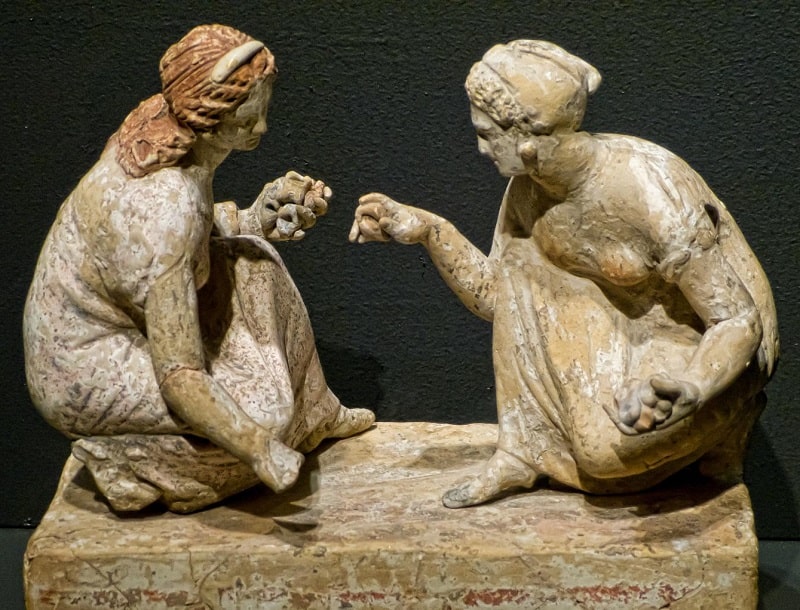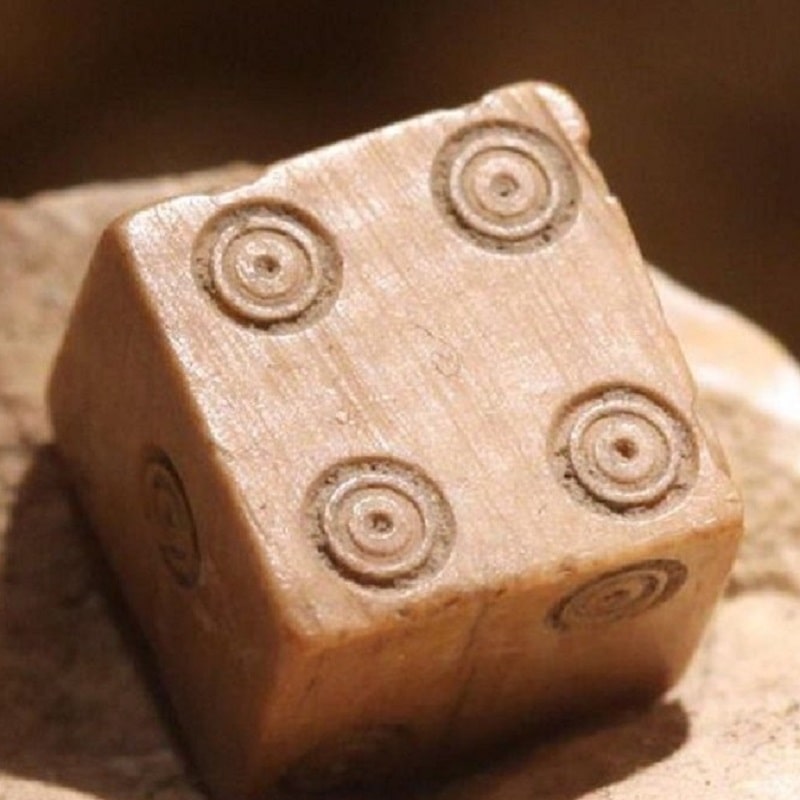It is not known how gambling came to be. However, researchers claim that the concept of gambling has been familiar to mankind for thousands of years. However, scientists cannot establish the entire chain of development of gambling.
Archaeologists often discover gambling paraphernalia. Having analysed the finds, they claim with certainty that dice were the first pastime. The oldest dice discovered date back 4,000 years. The ancient character of this game is also confirmed by the origin of the word “gamble”. It is derived from the word ‘azzahr’. This is an Arabic word, and its direct translation is dice.
Archaeologists have also often found images of men or divine beings on stones and ancient pottery vessels, who throw dice and count the results by means of counting boards. That is, they use sheep or dog ram dice in the game. The interphalangeal joint was still used in ancient times.
The ram bones have been found in great numbers at the excavations of very ancient human camps. Scientists estimate that the dice were thrown during gambling as far back as 40,000 years ago.
Knuckles were used not only for entertainment, but also for casting lots. Though gambling has always been popular in different parts of the world. For example, the Aryans were very fond of them. They used to play them all the time using walnut dice. It was one of the main entertainment during the conquest of India, which took place 2000 B.C. Dice are even mentioned in the poem “The Gambler’s Complaints”, which is part of the Vedic hymns of the Rigveda.
The homeland of cards is thought to be India. In ancient times they were round. The deck consisted of 96 cards which had 8 suits. In India, the game of cards was more like chess than a modern pastime.

It is believed that cards began to conquer Europe from Italy. That country has documented the first mentions of them, which date back to the second half of the 14th century. Researchers also believe that Italians invented the tarok. It is one of the oldest card games.
There are many references to gambling in the lore of different nations. The Greeks and Romans even had a god of gambling. In Ireland and Scotland, stories of fantastic gambling have been passed down from generation to generation. However, gambling tales are most common in Asian literature, including Indian, Filipino and Japanese works. In Asian countries, wives, children and other relatives were often gambled. It was also not uncommon to bet using one’s body parts. In North America, too, there is a great deal of history about gambling. On this continent, half of all gamblers are Indians.
In ancient Rome, the Emperor Claudius was greatly enlarged by the game of dice. He entertained himself in this way very often. Meanwhile, ordinary Romans could only play dice during certain seasons.
During the Middle Ages the church was almost constantly against gambling. It was supported by many kings. They tried to eradicate such entertainment. However, their efforts were not successful. This confirms the popularity of gambling in different European countries.
The first technical device to play roulette appeared in France. It happened in 1765. The author of this gambling game is considered to be Gabriel de Sartinet. He was a police officer and wanted to invent an entertainment where no one could cheat.
Charles Grimaldi was the first to open a casino. He did so in 1863 without much difficulty, as he was a prince of the Principality of Monaco. The first slot machine appeared in 1895. It was invented by Charles Faye, a mechanic from America.
By the twentieth century, all the main gambling amusements, which are now found in every casino, had been invented. They were first legalised by Americans in the state of Nevada. They even built Las Vegas. It was a village at first, but later became a gambling capital.

